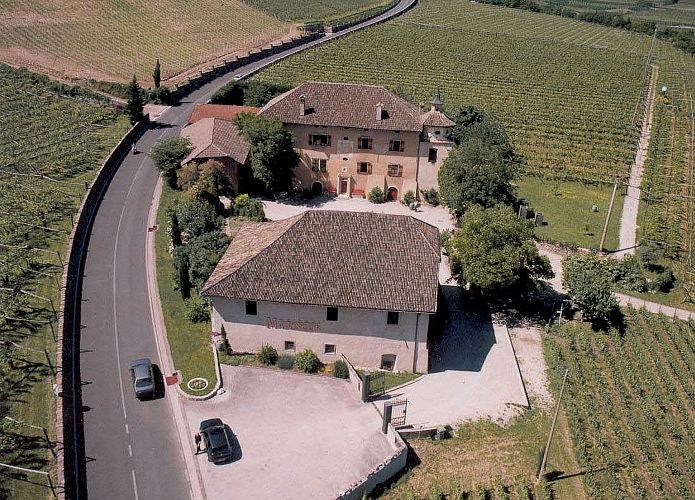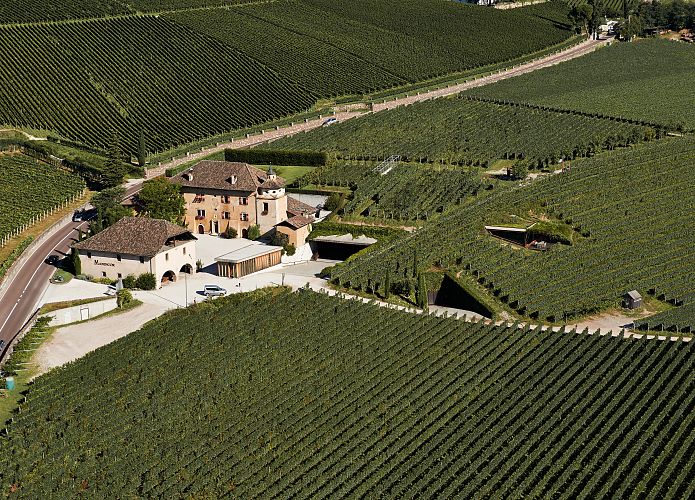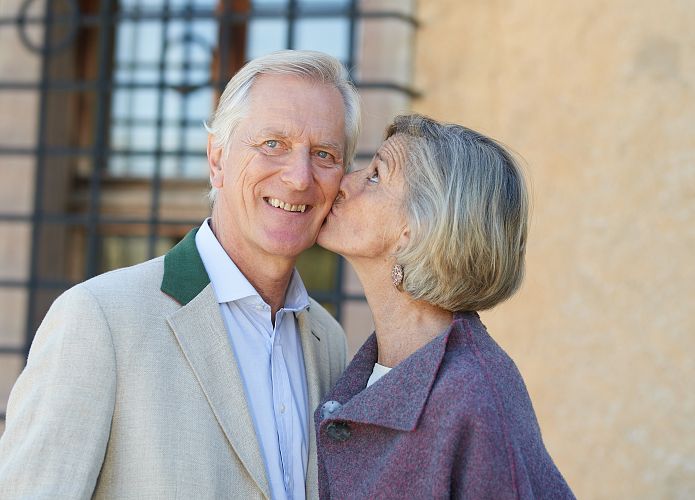20th anniversary of the cellar in the vineyard
The Times They Are a-Changin’
Depending on your point of view, twenty years is either a little or a lot. In biodynamics, we learn to see both the tiny details and the big picture. This is also how we look at the cellar in the vineyard today, which we have been living and working with for the past twenty years.
A place where grapes are transformed into wine, a workplace and a winery vision that has become winery reality: How can one building be everything?
Because we work in accordance with biodynamic principles, we think in terms of processes and welcome change. This also applies to the cellar, which seems to be immutable matter at first sight only.
It is now twenty years old. That is not much compared to the manor house, which – at 412 – bears the marks of time with elegance and shows us how to age gracefully.
How far has the cellar in the vineyard come along this path in its first twenty years? When, how and where did it become an integral part of the landscape, of people’s minds and lives?
Below we offer feelings, reflections and comments on the “new” cellar in the vineyard from different perspectives.
Michael Goëss-Enzenberg
The “third architect”
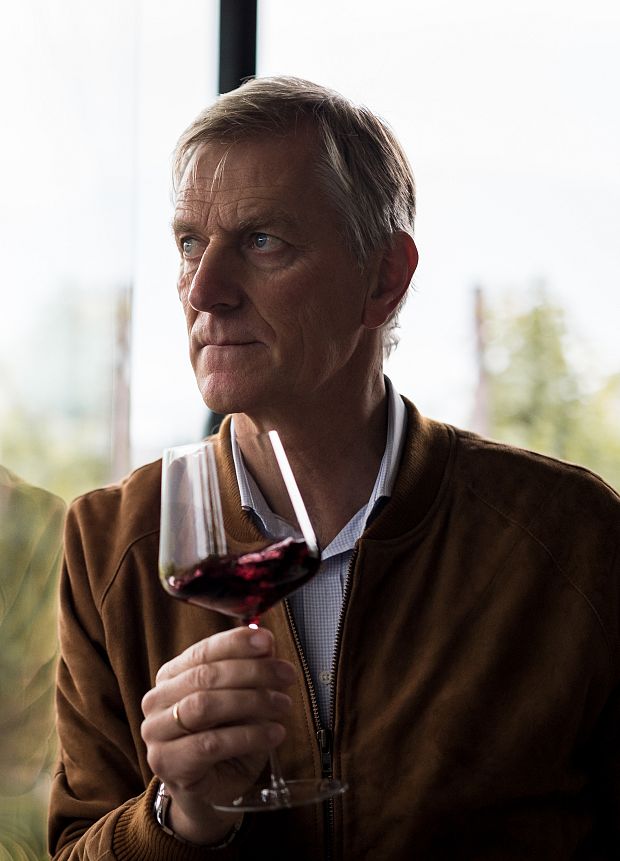
“Twenty years after the opening, I will only touch on the architecture and the building and instead reflect on what the cellar has achieved. To do this, I will use a formulation employed by our architect Walter Angonese: ‘keep on building’.
The processual aspect of this expression fits in perfectly with our mode of working as a biodynamic winery. The relevant structure must be firm, solid and built to last, while at the same time allowing and even encouraging change.
Soon after we started producing wine in Manincor, it became obvious that we would need a larger cellar. Our thinking about the cellar also helped us shape our vision for Manincor.
‘The third architect’ – this is what I was sometimes called because I was always involved and always contributed my ideas. Perhaps this is why Walter Angonese speaks of architecture as ‘shared experience and suffering’.
After twenty years, it is clear that the building suits us as a family and as a winery. In addition to all the requirements it meets today, it also leaves room for further development. It is a place where our son Kassian will be able to make his own contribution in the future.
On some days, my eye is caught by the play of sunlight on a wall of the cellar. Or I take pleasure in materials that are ageing well.
When I am with guests in our tasting room with the view of Lake Caldaro, a few chickens often come by and watch us from outside. That warms my heart and is proof to me that the cellar is accepted as an integral part of winery life.”
Sophie Goëss-Enzenberg
Potential for the future
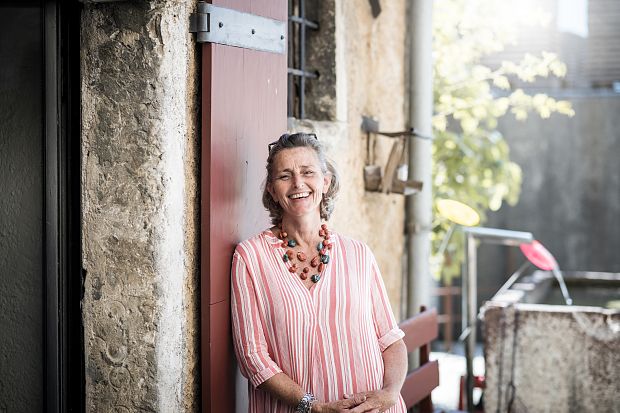
“Right on the 20th anniversary of our cellar, my husband and I moved from Manincor to Castel Campan in the Mitterdorf district of Caldaro. The time when the cellar went operational was a similar turning point.
The cellar is a flagship project for our company. We set the bar high for ourselves with the quality of the design, architecture and construction. And yet we were able to resolve all the challenges through – often very passionate – debate.
With the cellar, I considered it important to create something that transcends us, something with potential for the future, for future generations.
Walter Angonese, our esteemed architect, talks about the ‘possessability’ of a building. For me, this means how we as a family ‘took possession’ of the building; how we integrated it into our lives and work. And also how it has taken possession of us.
We have experienced much together and filled rooms with twenty years of life. I have myself guided many visitors through the cellar; it has given me pleasure over and over again.
Our cellar feels like an anthill to me: busy and orderly. – I’m so pleased with the lucky coincidence that led us to the work of art on the concrete wall to the cellar: large metal ants.”
Helmuth Zozin, Winemaker
Work in progress
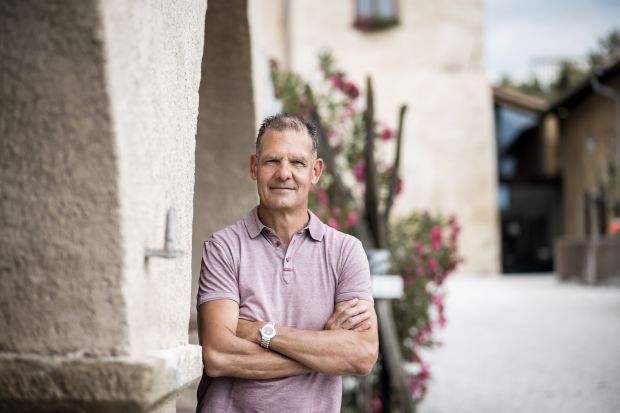
“I came to Manincor in 2008, when the cellar had already been in operation for several years. My focus is on the functionality of the building. It has everything we need to produce wine the way we want it.
I see the cellar as ‘work in progress’. A building is never finished, they say, and our cellar is a perfect example. It is constantly being honed and made still more fit for purpose.
As a biodynamicist, I welcome microorganisms in the cellar. A building accumulates many things, erodes in places and naturally gets older. The question is always whether the changes support or oppose our quality standards.
In general, I believe that form must follow function. It must not stand in its way. Function is unambiguous; form and aesthetics are ambiguous. Our cellar is a physical shell for what we do and offers us all the relevant possibilities.”
Kassian Goëss-Enzenberg
The cellar and the future
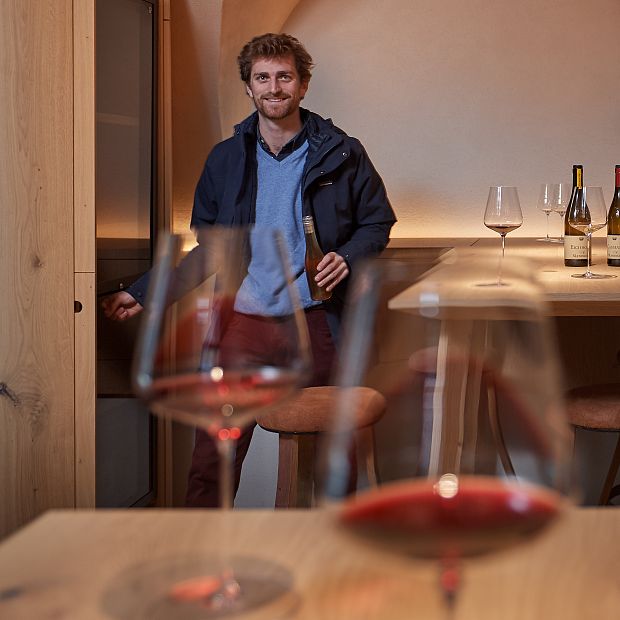
“I was six years old when work on the cellar began. At the weekend, when the trucks had gone, everything was quiet again. I marveled at the huge hole and collected stones of every kind and color.
Today I see an ultra-modern facility – even after twenty years and from the perspective of my generation. It is both timeless and in tune with the times.
In two years’ time, I will be taking over the business. That fuels my ideas and visions. How about enlarging the cellar? Above all, to handle our grapes with even greater care and sensitivity?
The design of the cellar was extremely well thought out. Over the course of twenty years, however, there has nevertheless been room for optimization. One example is a small water treatment plant, which enables us to make even more sparing use of our water resources.
The cellar has made a valuable contribution to building our brand. Thanks to the cellar, Manincor has become a focal point on the Wine Route. The large old manor house is very visible, while the new cellar lies almost hidden under the vineyard – a polarity and at the same time symbiosis of tradition and modernity, as expressed in the family and our wines.”
Alistair, cellar master
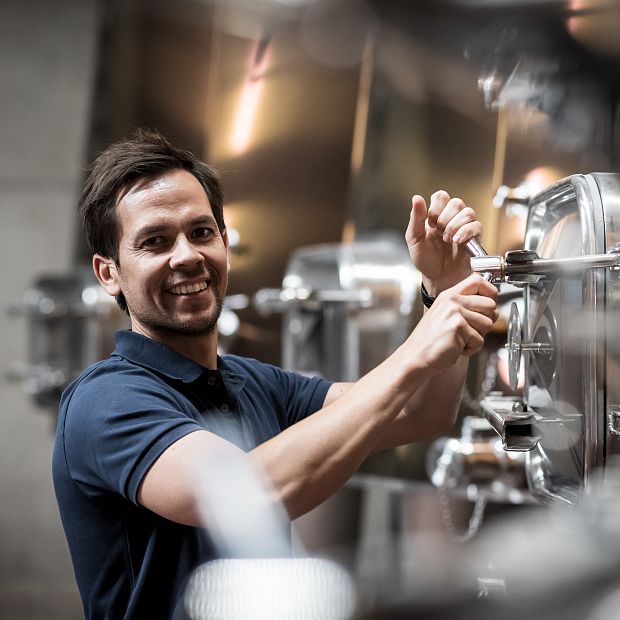
The cellar at Manincor is a hidden gem. It is well kept, well thought out and constantly updated. After 20 years it is still a very modern winery. In Australia, where I come from you would have difficulties finding something like it. I am very fortunate that I ended up in Manincor.
Walter Angonese
Appropriateness & contemporaneity
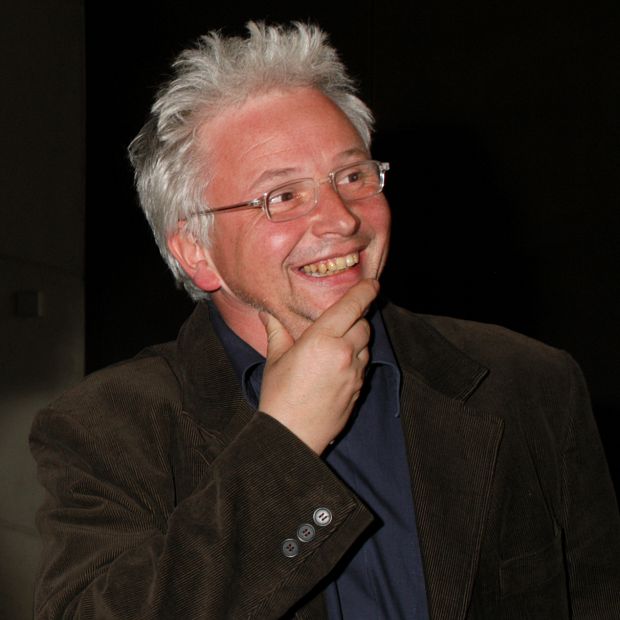
“Our joint project is now really grown up and experienced, and I am very happy about that.
When Count Michael and I (together with Rainer Köberl and with the collaboration of Silvia Boday) first gave thought to a new cellar for the Manincor estate in 2000 - 2001, we were very much aware of the importance of carefully blending this spatially ambitious project into the existing ensemble and the surrounding landscape, of paying homage to the estate and its more than four hundred years of history, of ‘keeping on building’ at Manincor, as it were.
I believe – and the positive response in the architecture and art scene would seem to bear this out – that we have built something ‘appropriate’. Appropriateness is an important concept in my view of architecture. Contemporaneity, especially in the here and now, does not call for grand gestures; for me, contemporaneity is about handling the past projected onto a possible future.
We spoke a quiet language, so to speak, and today, now that everything is so wonderfully embedded, I think that was a good thing. With regard to the interior, we were keen to compensate for the external view with rooms of strong character, to create functional spaces without being guided solely by function, to give rooms dignity and distinction.
Several years after completion of the cellar, biodynamics came to Manincor. I often ask myself: how could we weave the powerful ideas of Rudolf Steiner and his anthroposophical thinking, which are so important for biodynamics, into the project?
From the dynamics of this intensive involvement with the project and the experiences we have gained in the meantime, this symbiosis would again be constructed, but with a little more attention paid to the anthroposophical view of energy. By and large, we would remain true to this wonderful, predominantly subterranean world.”
